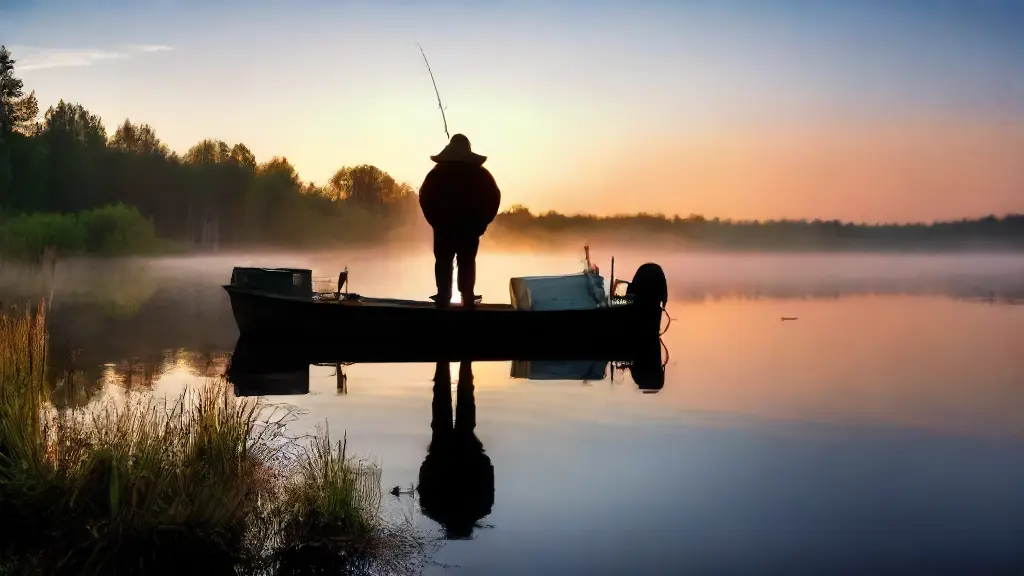How to Maintain Weedless Lures for Longevity

Effective freshwater fishing begins with the right lures. Among these, weedless lures occupy a special position for their versatility in hooking desired species.
The durability and performance of such lures ultimately depend on careful maintenance and storage procedures.
Clogged weedless lures can significantly reduce their effectiveness, and this is often caused by the accumulation of debris such as aquatic life, sediments from water bodies, or other particles introduced during the fishing trip.
Regular cleaning and maintenance can significantly counteract the negative impact these factors.
Routine cleaning must be incorporated into your fishing strategy to prevent the build-up of debris over time. A reasonable approach could be to use corrosion-resistant materials in the fishing gear, apply lubrication to moving parts, and perform regular cleaning and maintenance to protect aquatic life in water bodies.
Fishing Gear Maintenance Essentials
The thrill of reeling in a big catch is often diminished by the frustration of dealing with malfunctioning or damaged fishing gear. To ensure a successful and enjoyable fishing experience, it’s crucial to prioritize regular maintenance to extend the life of your lures and optimize their performance.
Regular cleaning is an essential part of this maintenance process, and it’s not as simple as just wiping down your lures with a cloth.
Using the right cleaning tools and techniques, such as a soft-bristled brush and mild detergent, can help remove dirt, grime, and debris from the lure’s surface, ensuring a smooth and efficient fishing experience.
Inspecting your lure regularly can help identify common damage points and weaknesses before they become major issues. A quick inspection can reveal signs of wear and tear, such as cracked paint or worn-out hooks, that may require repair or replacement. Addressing minor issues during the cleaning, drying, inspection, repair, and replacement ensures the product’s durability.

What Corrodes Lures Fast
Fishing enthusiasts often take their prized lures for granted, neglecting the subtle yet crucial elements that determine their lifespan.
I. Introducing the Enemy of Lure Longevity
Factors Contributing to Lure Corrosion.
Several factors contribute to lure corrosion, including exposure to harsh chemicals, unpredictable weather patterns, and unforgiving aquatic environments.
The Corroding Agents
Saltwater’s corrosive properties make it a formidable foe for lures, gradually wearing them down and reducing their effectiveness.
Impact of Weather Conditions.
Changes in temperature and humidity can significantly impact a lure’s durability, making it essential for anglers to adapt their fishing techniques accordingly. Through careful consideration of these factors, we can develop effective strategies for sustainably ensuring the long-term availability of both freshwater and saltwater resources for angling and ecofriendly fishing techniques.
| Factors Contributing to Lure Corrosion | Impact on Lure Lifespan | Prevention Strategies | Long-term Consequences |
|---|---|---|---|
| Saltwater Corrosion | Gradual wear and reduced effectiveness | Regular cleaning and rust-resistant coating | Early lure failure and lost fishing trips |
| Unpredictable Weather Conditions | Temperature and humidity fluctuations | Adapting fishing techniques to changing conditions | Lure damage and reduced lifespan |
| Harsh Chemicals | Corrosion and degradation | Storing lures in dry, chemical-free environments | Shortened lure lifespan and increased maintenance |
Lubrication for Smooth Operation
Fishing is a precision sport that demands meticulous attention to detail, from selecting the right tackle to mastering the art of presentation. A smooth operation is paramount to reeling in the big catch, and lubrication plays a crucial role in achieving this goal.
Why Lubrication Matters.
Lubrication is essential for maintaining the integrity of your weedless lures, which are designed to withstand the rigors of fishing in dense vegetation.
Without proper lubrication, these lures can become stuck, leading to lost fish and damaged equipment. while oil-based lubricants are essential for minimizing drag and allowing fish to swim freely during migration periods, thus enhancing the overall fishing experience.
Inspecting for Rust Damage
Casting a line into the water without inspecting your lure for rust damage is like going on a fishing trip without the right bait – you might as well be setting yourself up for disappointment.
Rust formation on metal components occurs due to a chemicalAPS reaction between iron and oxygen, in the presence of moisture and salts. It’s essential to understand the causes of rust damage to weedless lures, as improper handling and storage can accelerate the process.
Inspect intricate areas using a magnifying glass and flashlight to identify common signs of rust damage, such as flaking, pitting, or discoloration.
Use a wire brush and mineral spirits to remove corrosion and scale from affected areas. Consulting expert advice from reputable sources, like fishing communities and DIY guides, can provide valuable insights into the techniques and methods used by experienced anglers.
Facts About Rust Damage on Fishing Lures
- Rust formation on metal components occurs due to a chemical reaction between iron and oxygen, in the presence of moisture and salts.
- Improper handling and storage can accelerate the process of rust damage on weedless lures.
- Common signs of rust damage include flaking, pitting, or discoloration, which can be identified using a magnifying glass and flashlight.
- Removing corrosion and scale from affected areas using a wire brush and mineral spirits can help prevent further damage.
Repairing vs Replacing Lures
For many recreational fishing enthusiasts, a well-worn lure can be a source of both frustration and nostalgia, but the decision to repair or replace it often hangs in the balance.
Lure longevity and the importance of regular maintenance are often overlooked, but neglecting to do so can have a significant impact on lure performance. In fact, a study by the National Oceanic and Atmospheric Administration (NOAA) found that improperly maintained lures can reduce their effectiveness by up to 50%.
Identifying potential issues is key to determining whether a lure can be repaired or needs to be replaced.
Common signs of lure wear and tear include damage to hooks, corrosion on metal bodies, and excessive wear on paint and finishes.
Cleaning and lubricating lures is an essential skill to master, especially with the abundance of online resources available to enthusiasts, professionals, anglers, fisherwomen, and recreational fishing enthusiasts.
.
Ecofriendly Maintenance Methods
For fly fishing enthusiasts, the thrill of reeling in a big catch is often reliant on a well-maintained lure that can withstand the rigors of the water.
In competitive bass fishing, the importance of maintaining weedless lures has become increasingly recognized, with neglecting lure maintenance potentially leading to poor performance, damage to the lure itself, and even injury to the angler.
Preparation is Key
When it comes to constructing trolling-resistant weedless lures, understanding the materials used is crucial.
Most modern weedless lures are made from durable plastics, metal alloys, or advanced polymer compounds.
Recognition of the role of cleaning and lubrication in maintenance is also vital. Debris and residue can accumulate quickly, reducing the lure’s effectiveness and leading to premature wear, which is a concern for sport fishing enthusiasts, competitive anglers, and bass fishing, fly fishing, and trolling enthusiasts alike when casting.
Water Resistance Explained
As we cast our lines into the water, we often overlook the crucial role that water resistance plays in our tackle’s performance. spinning.
Understanding the effects of water pressure on lures is crucial for optimal performance.
When a lure is submerged in water, it’s subjected to immense pressure that can compromise its integrity.
This is particularly true for lures with delicate mechanisms or those intended for use in deep waters.
Water resistance and the importance of lure design are inextricably linked, as a well-designed lure can withstand the rigors of the water and continue to attract fish.
The role of coatings and finishes in maintaining water resistance cannot be overstated. Teflon-coated lures, for instance, are designed to protect the lure from corrosion and wear, ensuring it remains effective and knot tying remains a breeze. Chrome and other fishing techniques emphasized spinning, baitcasting, knot tying, line management, lure selection, and bait selection.
Handling Aquatic Life with Care
Humans share the planet with a vast array of aquatic life, and it’s our responsibility to coexist with them in harmony. To ensure the long-term health of aquatic ecosystems, it’s crucial to develop a profound respect for the delicate balance within these environments.
Dive into the world of gear choices, and you’ll discover the importance of selecting equipment that not only excels in terms of functionality but also minimizes the risk of harming aquatic life.
Fishing strategies and tactics should be carefully considered to avoid causing unnecessary stress or injury to the creatures you’re interacting with.
By adopting simple storage methods for your gear, you can significantly reduce the risk of accidental releases or equipment-related harm to aquatic life.
Proper maintenance tips for your fishing equipment can also help prevent harm to aquatic ecosystems by minimizing the risk of debris or pollutants entering the environment. Remember, a well-equipped angler must consider tackle selection, gear choices, fishing strategies, tactics, maintenance tips, and storage methods to have a successful and enjoyable fishing experience.
Supporting Facts for Sustainable Fishing
- The world’s oceans are home to over 700,000 identified species of fish, with many more yet to be discovered.
- According to the World Wildlife Fund, 28% of the world’s fish populations are overfished, and 60% are maximally fished.
- The United Nations estimates that 80% of the world’s marine fish stocks are being harvested at or above their maximum sustainable levels.
- Scientific research suggests that the average fish has a lifespan of around 3-5 years, with some species living up to 20-30 years in optimal conditions.
Best Weedless Lures for Targeting Panfish
Best Weedless Lures for Fishing Around Submerged Trees


